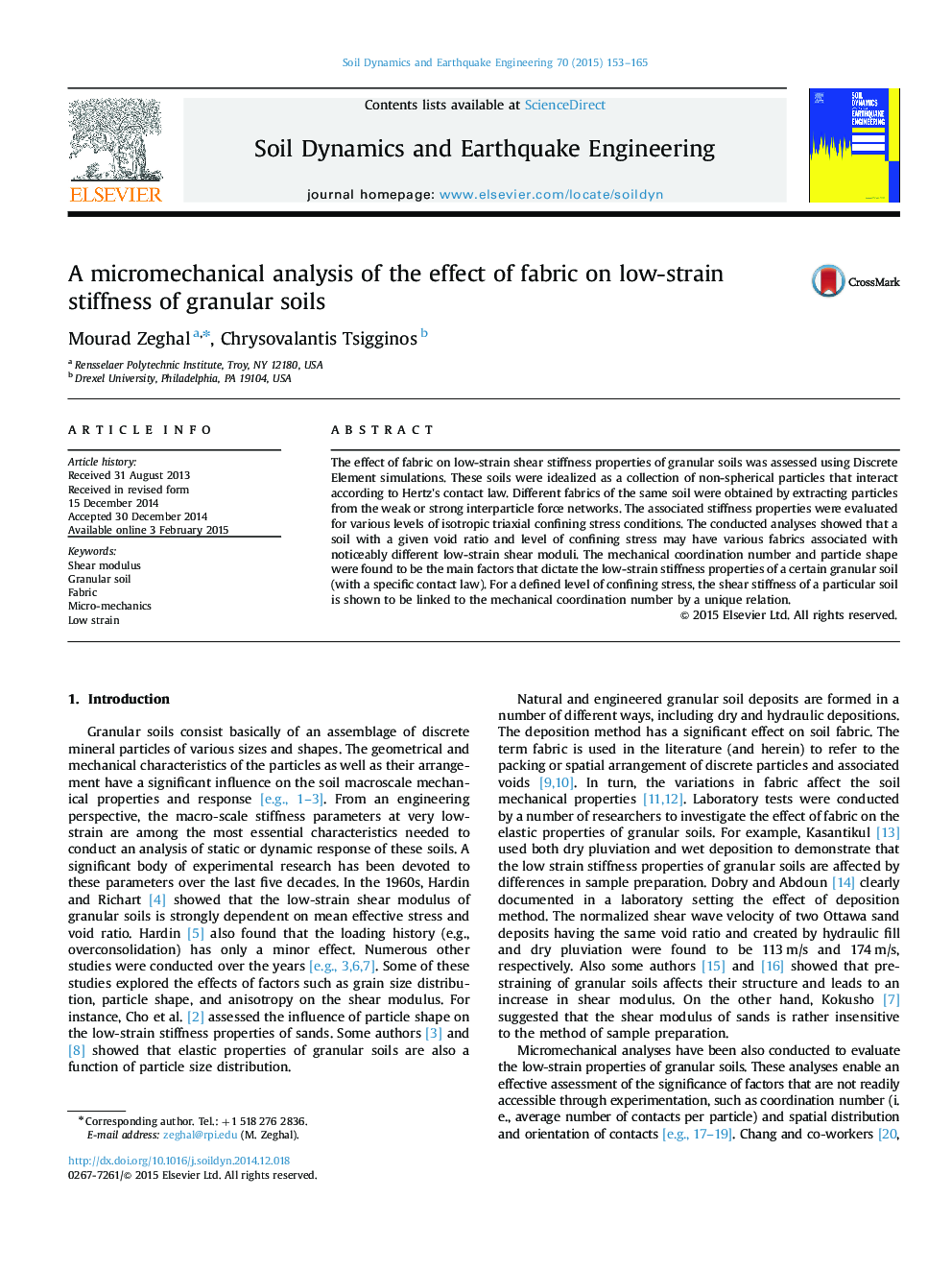| Article ID | Journal | Published Year | Pages | File Type |
|---|---|---|---|---|
| 304064 | Soil Dynamics and Earthquake Engineering | 2015 | 13 Pages |
•The effect of fabric on low-strain shear stiffness of granular soils was assessed.•A soil may have various fabrics associated with different low-strain shear moduli.•The coordination number is the main factor affecting soil low-strain stiffness.•Granular soils idealized using DEM as a collection of non-spherical particles.
The effect of fabric on low-strain shear stiffness properties of granular soils was assessed using Discrete Element simulations. These soils were idealized as a collection of non-spherical particles that interact according to Hertz׳s contact law. Different fabrics of the same soil were obtained by extracting particles from the weak or strong interparticle force networks. The associated stiffness properties were evaluated for various levels of isotropic triaxial confining stress conditions. The conducted analyses showed that a soil with a given void ratio and level of confining stress may have various fabrics associated with noticeably different low-strain shear moduli. The mechanical coordination number and particle shape were found to be the main factors that dictate the low-strain stiffness properties of a certain granular soil (with a specific contact law). For a defined level of confining stress, the shear stiffness of a particular soil is shown to be linked to the mechanical coordination number by a unique relation.
